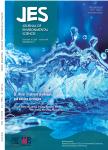Feasibility of housefly larvae-mediated vermicomposting for recycling food waste added digestate as additive
作者机构:Institute of Waste Treatment and ReclamationTongji UniversityShanghai 200092China Shanghai Institute of Pollution Control and Ecological SecurityShanghai 200092China Shanghai Engineering Research Center of Multi-source Solid Wastes Co-processing and Energy UtilizationShanghai 200092China
出 版 物:《Journal of Environmental Sciences》 (环境科学学报(英文版))
年 卷 期:2023年第128卷第6期
页 面:150-160页
核心收录:
学科分类:083002[工学-环境工程] 0830[工学-环境科学与工程(可授工学、理学、农学学位)] 08[工学]
基 金:This work is supported by the National Key R&D Program of China(No.2018YFD1100600).The authors appreciate Ms.Ning Zhang Mr.WeiWang and Mr.Jing Guo for their assistances in analysis
主 题:Biogas digestate Food waste Housefly larvae Larvae valorization Vermicomposting
摘 要:The development of methods for the efficient treatment and application of food waste digestate is an important research *** via housefly larvae is an efficient way to reduce food waste and achieve its valorization,however,studies on the application and performance of digestate in vermicomposting are *** present study aimed to investigate the feasibility of the co-treatment of food waste and digestate as an additive via *** food waste(RFW)and household food waste(HFW)were selected to assess the effects of waste type on vermicomposting performance and larval *** reduction rates of 50.9%–57.8%were observed in the vermicomposting of food waste mixed with digestate at a ratio of 25%,which were slightly lower than those for treatments without the addition of digestate(62.8%–65.9%).The addition of digestate increased the germination index,with a maximum value of 82%in the RFW treatments with 25%digestate,and decreased the respiration activity,with a minimum value of 30 mg-O_(2)/*** larval productivity of 13.9%in the RFW treatment system with a digestate rate of 25%was lower that without digestate(19.5%).Materials balance shows that larval biomass and metabolic equivalent had decreasing trends as the amount of digestate increased and HFW vermicomposting exhibited lower bioconversion efficiency than that of RFW treatment system regardless of the addition of *** results suggest that mixing digestate at a low ratio(25%)during vermicomposting of foodwaste especially RFW could lead to considerable larval biomass and generate relatively stable residues.



